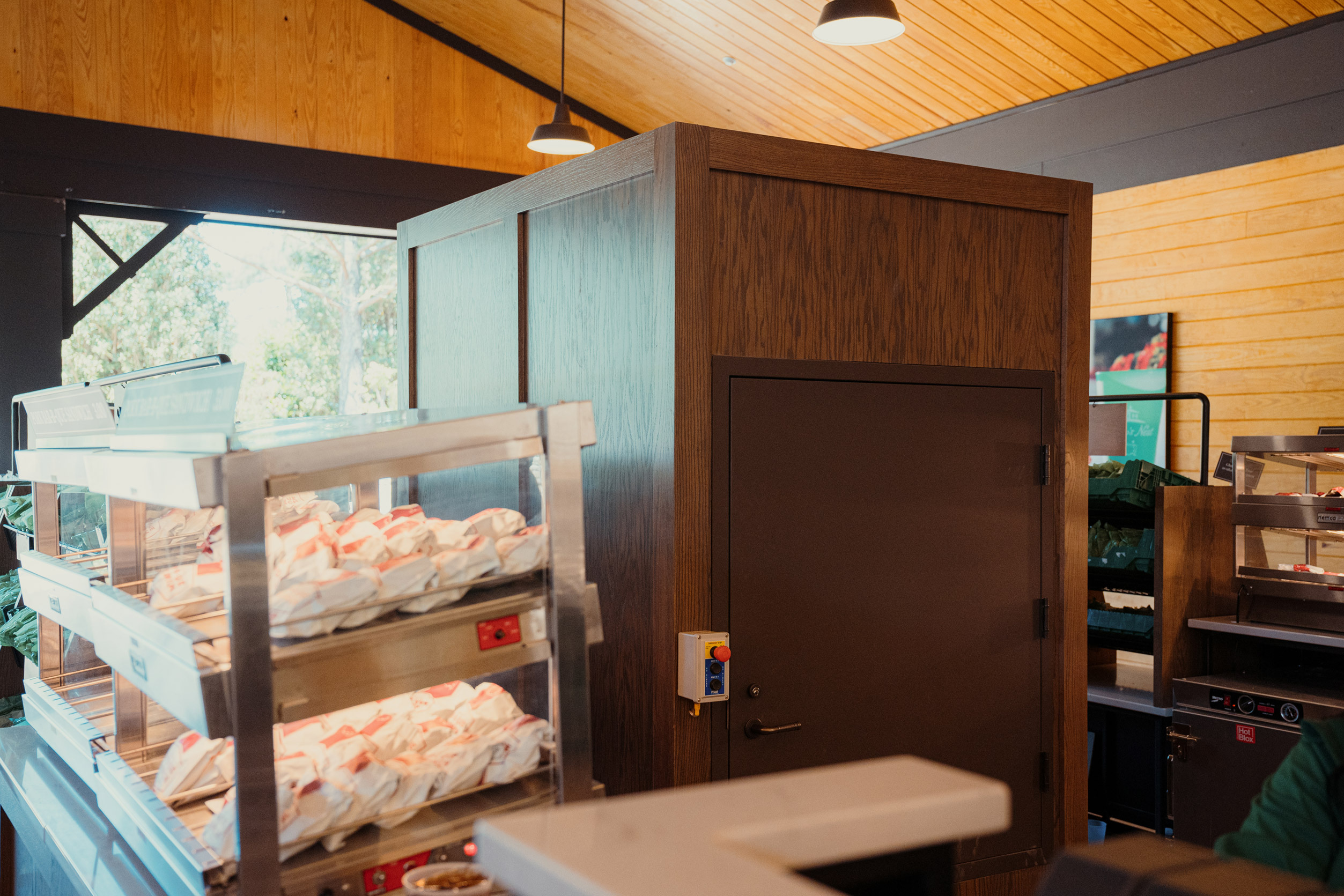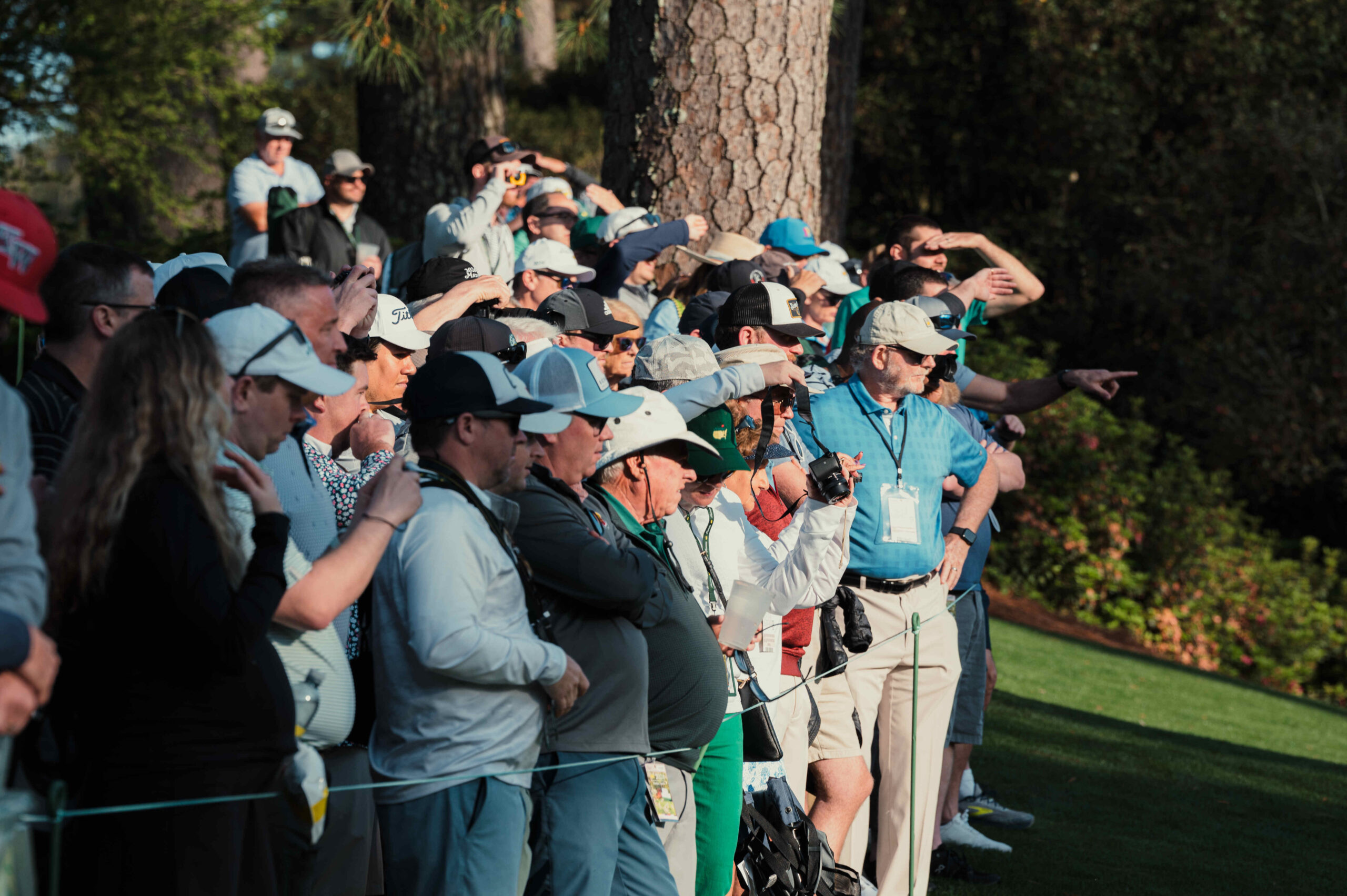The Masters is one of those places where an unassuming wood-paneled box you unwittingly walked by while grabbing a sandwich might actually be a hidden elevator delivering food from an underground lair.
Clifford Roberts thought of every minute detail and tried to anticipate the future, but even he likely could not have envisioned infrastructure capable of swiftly sending restocks of food from below-ground facilities up to the Masters concessions stands. Roberts, Augusta National’s Chairman in Memoriam and the man who made the Masters into golf’s most powerful force, was obsessive about the little things, and always sought continuous improvement of his Masters Tournament. That attention to every detail is a cornerstone upon which his legend persists, still looming over the club.
A new concession stand in the same old spot adjacent to the 8th tee box is where that continued pursuit of improvement can be promptly seen this year. It’s a sparkling structure, designed for a traditional appearance to blend in and look like it’s been there for years. Whether they succeeded with that aesthetic or not is a separate question – earlier this week, one close Augusta National observer called it a Carraba’s. Regardless of the exterior, the technology that lies beneath is where the infrastructure for and commitment to efficiency and improvement exists. These upgrades at Augusta are often done out of view, below ground. This concession stand is now said to have two subterranean levels for greater inventory, a roundabout and semi-hidden driveway (you can see the end of it as you walk past) where large trucks surreptitiously appear in the middle of the course to back up and deliver more food and drinks, and hidden lifts between each customer lane to port restocks up to shelves on the surface.
⚠️ PROGRESS REPORT ⚠️
ANGC HOLE 8 & 18 PATRON HUB 💚⛳️#TheMasters#Masters2024
(📸 ©03JUN2023 EurekaEarth)
(📸 ©08AUG2023 EurekaEarth)#EurekaEarth #LoveAugusta pic.twitter.com/jup4aPMYdK
— Eureka Earth® (@EurekaEarthPlus) September 4, 2023
The unbranded “Crows Nest” beer is still Blue Moon. The “Import Draft” is Stella. The stonework is all new. The bolted-down congregating tables are all new. One fan marveled to his buddy about the silhouetted Masters logo cut into the metal top of the tables. The ground, meant to look natural, is that soft rubberized surface you might find at your local playground. The concession stand at Amen Corner, which is not new this year, still has the same sienna gravel mimicking the color of the pine straw – it moves and shifts between your feet, and has to be replaced or reinforced as the week wears on or if rains come. That won’t be an issue for the new stand at the 8th.
Whether it’s technology to suck the moisture out of the turf, the world’s greatest irrigation system, cables for the broadcast, tunnels to move people all around the expanding property, and levels beneath the pro shops for delivery and re-stocking of merch, the 8th-hole concession stand is the latest in what’s become an increasingly vast underground operation aimed at making this four-day tournament better for all involved. The technology could maybe not have been anticipated, but this pursuit was always part of Roberts’s vision. That vision and mandate included the low prices still charged for concessions that are now transported and provided by a technological overhaul that was probably not as cheap.
The concession stand update is in line with the tournament’s drive to be one of the best sports fan experiences in the world. It comes in a year when a backlash to professional golf has confronted the tours with a narrative that fans are coming last in the continued squabble over how billions of dollars will be divided among the game’s elite. That narrative may be overdone. But TV ratings are down across the board. The events have been meh. Corporate board reshuffles, organizational investments, and internal squabbling over financial choices dominate every other piece of news – not the golf shots or tournament champions. The narrative has taken root and bloomed that this sport, less appealing with its stars in disparate places trying to box each other out for more and more cash, has gotten exhausting, and might not be worth the trouble. They’re not prioritizing us, so why should we care all that much about them?
This is the predominant lens through which pro golf has been viewed the first part of this year. The product has been underwhelming for fans. The news cycle has grown tiresome. Unlike, say, the NFL, this is a game that exists well beyond the bounds of the professional level. A “fan’s” interactions with golf can quickly become more about their own direct relationship with the game. It’s not hard to see why someone would rather care more about chopping around some local course on the weekend than watching commercial-laden broadcasts and trying to care about whoever the hell might be 45th in the FedEx Cup.
The pros continue to fight over every crumb, with their player-run organizations trying to balance all the various wails and pleas, often at the weakening of their own overall appeal. The Masters does not have to and seemingly chooses not to deal with any of this, instead keeping its head down in pursuit of Roberts’s original goals.

The dumbwaiter in the new concession stand at Augusta National
At the Masters, the pros are the main characters, yes. But they’re also still just a part of the overall product and remain subject to many of the same rules and regulations that fans, media, and members are in pursuit of the best-run sports event in the world. Stewart Cink, in a recent chat with Golfweek, tiptoed into the dichotomy between the pedestals a player may be put on at a PGA Tour event versus the Masters.
“I have to be delicate in how I say this but the Masters is not quite as forthcoming in smothering you with services as the other PGA Tour tournaments,” said Cink, who is not in the field this week. “The Tour events compete against each other for player participation and therefore good fields, so they bend over backwards to say ‘Sure, we can make that happen’, whereas at Augusta there’s a lot more of ‘That’s not something we do.’”
This is not because the Masters likes the players less. They just have the ability and leverage to care more about the tournament overall.
The fan is so much a priority at the Masters that the word itself does not do attendees justice to the ears of the organizers, to the point of being considered derogatory. The preferred nomenclature is patron. It’s not just the concession prices, either. The prioritization is readily apparent across many platforms. Roberts saw the future pains so many golf fans have felt in recent decades about constant commercial breaks, so he set up a tournament and broadcast where that would not be permitted. He wanted the rights fees to be reasonable to avoid rampant ads weighing down the broadcast, which he predicted would drive fans to lose interest quickly. “It’s our feeling that the practice of a little moderation at this time is desirable,” Roberts is quoted as saying in David Owen’s excellent book. The tradition of members wearing their green jackets around the property during the tournament was not simply to look fancy or important, but to stick out as an information source if a patron had a question.
Sometimes the patron has become prioritized to the detriment of the course itself. Such is the case with the removal of some architecturally significant mounds around the 8th green to improve sightlines for those trying to watch the action from outside the ropes. The golf course was made much worse in pursuit of this fan-centric goal, and those mounds were eventually restored. But others have been lessened or removed over the years with a goal of improved viewing. They constantly try to manage this balance.
Even the wildly uncommon no-phones rule creates the benefit (unintended perhaps) of a rare day out completely present with your company and place. It can at times feel inconvenient or antiquated, but people sure don’t look mad about it walking around out there. No one looks mad about anything, really. Everyone looks like they are having one of the best days of their lives with people they enjoy.

I would like to be clear: this is not to suggest Augusta National Golf Club knows what’s best for you, or that it’s some kind of populist institution. It does not get everything right, and its history features mistakes and indiscretions. But the Masters Tournament is different. Some of the rules can feel overdone and overaggressive. But they work toward the tournament’s animating purpose, a purpose that goes beyond just paying out a big purse or creating playing opportunities.
It’s the club’s strong, singular voice that enables it to prioritize the tournament for all. This runs in contrast with the player-run landmines of the tours and the internecine battles that result from trying to align not just the entire membership, but even the smaller elected boards. It’s an advantage Augusta has held onto since its founders pursued it at the tournament’s outset. For a patron (or fan), it’s always been noticeable. But at this current moment in pro golf, it’s an approach that stands apart even more.
There are rules designed to create the best tournament experience in the world, and this is the one place almost everyone follows them, regardless of their Instagram follower count or title or tax bracket. The first page of the official Spectator Guide pamphlet fans pick up upon entry still contains Bobby Jones’s original outline of “Conduct, Customs, and Etiquette.” But the last page now has a QR Code for an attendee to send them feedback about “their Masters experience.” Like the introduction of subterranean technology to deliver more low-priced food even faster, Augusta’s methods may be newer, but their original emphases remain.
Check out our 2024 Masters site hub for more Masters content. And sign up for our free newsletter to stay up to date with everything at Augusta National.


 by
by 
